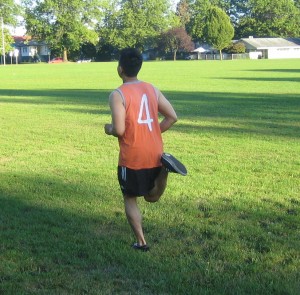If you have heard about gout and pseudogout, you might wonder if there is a difference between the two conditions. When it comes to gout, it is a form of arthritis where surplus uric acid in the bloodstream is deposited in the joints which results to joint pain, swelling and redness. As for pseudogout, it is a type of deposition disease of calcium pyrophosphate that can strikingly mimic other forms of arthritic, nerve disease or neuropathy.
The deposits of crystals in the joints can cause both pseudogout and gout. The uric acid crystals can lead to gout while calcium pyrophosphate crystals can lead to the development of pseudogout.
What are the causes?

The elevated levels of uric acid or hyperuricemia can lead to gout. The surplus production from medications, diet and other illnesses as well as low excretion can lead to high levels of uric acid. A diet that is packed with purines including seafood, cheese, meat, alcohol and high-fructose sweets can increase the risk.
On the other hand, the elevated uric acid levels do not necessarily mean that the individual will develop gout. Other possible risk factors for gout include being male, older age, surgery, trauma and dehydration, medications such as low-dose aspirin and diuretics as well as conditions such as hypothyroidism, kidney disease, heart disease or high blood pressure. Even though pseudogout has no specific cause, it most often develops after trauma, if there is a family history of pseudogout or the level of iron in the blood is high.
What are the symptoms?
Gout affects the big toe joint in most cases. The redness, pain and swelling rapidly increases within 1-2 days and spread to the areas surrounding the joint. This condition appears similar to a skin infection or injury and the pain can affect walking. The symptoms resolve within a few days with proper treatment but can last for several weeks.
Pseudogout and gout have similar symptoms since both can cause abrupt pain and swelling in the affected joints, subside without treatment and usually come and go. There are also differences to be noted though. Even though gout usually affects the big toe, pseudogout often affects the larger joints especially the knees.
Acute pseudogout can also lead to fever and an elevated white blood count. The doctor might draw out fluid from the affected joint and assess it to distinguish between the two diseases. The urate crystals in gout appear different from the calcium crystals in pseudogout.
Treatment
The doctor manages gout with non-steroidal anti-inflammatory drugs (NSAIDs). If the individual could not take NSAIDs due to stomach pain or a history of stomach ulcers, the doctor might prescribe colchicine. If the individual could not tolerate colchicine, oral steroids such as prednisone can be given.
When it comes to pseudogout, if only 1-2 joints are affected, the treatment involves drainage of the fluid in the joint using a needle and injecting a steroid into the joint to reduce the inflammation. If the pseudogout affects more than 2 joints, NSAIDs, oral steroids or colchicine are prescribed. In addition, resting the affected joints can also help reduce the symptoms.
Long-term effects
The treatment does not require removal of the crystals from the joint in pseudogout or gout. After an attack, the individual might be free from symptoms for years. The future gout attacks are more likely to affect more than one joint as well as the joints in the upper body. As gout progresses, the uric acid crystals can also deposit in the connective tissues. This results to the development of lumps under the skin known as tophi. These lumps do not trigger pain but can cause disfigurement and an indication of chronic gout.
Preventive measures
When acute gout attack subsides, it is vital to avoid foods packed with purines in order to prevent future attacks. Consuming dairy products low in fat as well as cherries can also reduce the levels of uric acid. In case the uric acid stays high, there are medications that help reduce the levels.
If the individual experiences more than 3 attacks of pseudogout in a year, the doctor might prescribe the intake of NSAIDs on a daily basis in order to prevent future attacks as well as the destruction of the joints.
